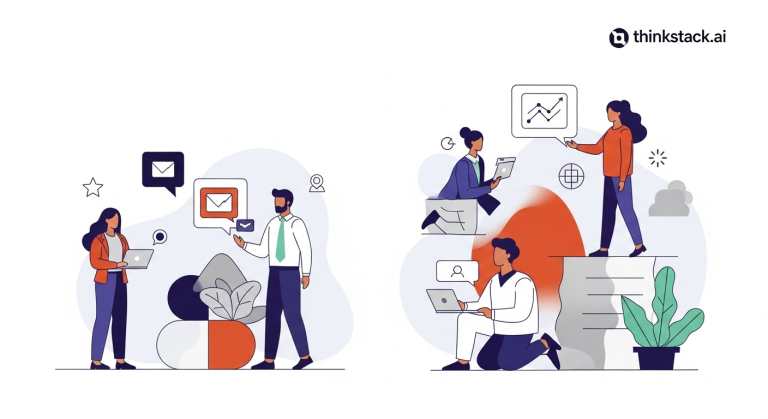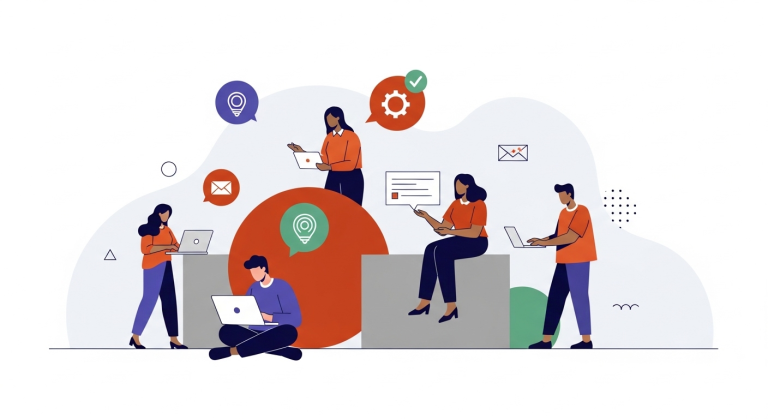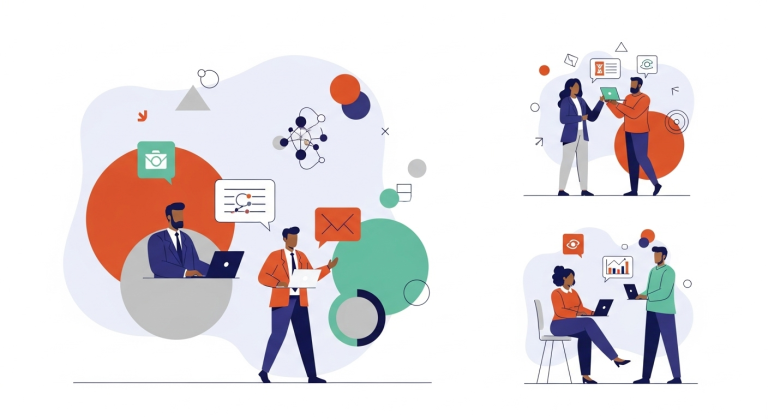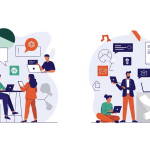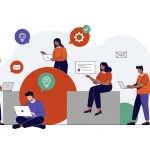Machine Learning: A Beginner’s Roadmap to Your First AI Project
From “zero” to “I trained a model” this weekend—no jargon, no PhD, just curiosity and a laptop.
If you’re diving into machine learning for beginners, know this: if you can use a spreadsheet, you can build your first AI model.
That may sound like marketing fluff, but it’s true. Machine learning (ML) is no longer gated behind arcane math or supercomputers. Open-source libraries and free cloud notebooks have leveled the playing field. This article is your friendly guide to stepping onto that field—even if you’ve never written a line of Python before.
We’ll cover:
- What “machine learning” actually means (in plain English)
- A 5-step roadmap from picking a dataset to deploying a working model
- Two starter projects—one Python, one no-code
- Quick troubleshooting tips and next-step resources
Bookmark this page—you’ll come back to it more than once.
Part 1: What is Machine Learning? A Plain-English Explanation
Imagine teaching a toddler to recognize cats. You don’t write a rulebook—you show pictures and say “cat” or “not cat” until the child learns the pattern. Machine learning is the same idea. Except now the “child” is an algorithm and the “pictures” are rows in a spreadsheet.
Here are a few terms you’ll see everywhere:
- Features: the columns in your data (age, price, pixel value, etc.)
- Label: the answer you want the model to predict (e.g., price of a house, spam vs. not-spam)
- Model: the rules the algorithm learns from your data
- Training: the process of finding those rules
- Prediction: using the rules on new, unseen data
That’s it. Everything else—linear regression, decision trees, neural networks—is just a different way to discover those rules.
Part 2: Your First Machine Learning Project – A 5-Step Roadmap
Step 1: Pick a Problem That Excites You
Motivation is key. Choose something small and personal:
- Predict whether your houseplant needs water today
- Classify tweets from your favorite celebrity as positive, neutral, or negative
- Forecast daily bike-rental demand in your city
Tip: Go for binary (yes/no) or multiclass (A/B/C) labels—simpler than predicting numbers.
Step 2: Grab a Beginner-Friendly Dataset
Great places to find datasets:
Look for CSV files under 10 MB—they’ll load fast and won’t crash your notebook.
Step 3: Choose Your Toolchain
Option A – Python (most flexible)
- Tool: Google Colab (free, browser-based)
- Libraries: pandas, scikit-learn, matplotlib
Option B – No-Code (fastest)
- Teachable Machine by Google
- Also try: Obviously.AI or JADBio (for tabular data)
Step 4: Build, Train, Evaluate
Here’s a sample Python workflow (ready to copy/paste):
# 1. Load data
import pandas as pd
df = pd.read_csv("https://raw.githubusercontent.com/rolandmueller/titanic/main/titanic3.csv")
# 2. Preprocess
X = df[['pclass', 'age', 'fare']] # features
y = df['survived'] # label
from sklearn.model_selection import train_test_split
X_train, X_test, y_train, y_test = train_test_split(X, y, test_size=0.2, random_state=42)
# 3. Train model
from sklearn.ensemble import RandomForestClassifier
model = RandomForestClassifier()
model.fit(X_train, y_train)
# 4. Evaluate
accuracy = model.score(X_test, y_test)
print(f'Accuracy: {accuracy:.2%}')
Tip: Accuracy above 70% on your first try? Celebrate and move on—perfection can wait.
Step 5: Share & Iterate
- Export your model (.pkl file) and build a Gradio or Streamlit app
- Upload your notebook to Kaggle or GitHub
- Tweak one thing at a time and watch your metrics improve
Part 3: Two Beginner Machine Learning Projects to Start Today
🚀 Project A: Python — Predict Iris Flower Species (15 lines of code)
Dataset: sklearn.datasets.load_iris (built into scikit-learn)
Goal: Classify flowers into setosa, versicolor, or virginica using petal length and width
🤖 Project B: No-Code — Rock-Paper-Scissors Camera Classifier (10 min)
Tool: Teachable Machine
- Go to teachablemachine.withgoogle.com
- Choose “Image Project → Standard”
- Record 200+ images for rock, paper, and scissors using your webcam
- Train and download the model
- Embed it in a webpage and challenge friends to play!
Part 4: Common Roadblocks & Quick Fixes
| Symptom | Likely Cause | One-Line Fix |
|---|---|---|
| Accuracy stuck at 50% | Label leakage or missing features | Check if your label is accidentally in X |
| MemoryError in Colab | Dataset too big | Sample 5k rows with df.sample(5000) |
| Model predicts same class every time | Severe class imbalance | Use class_weight='balanced' |
| “Kernel died” in Colab | GPU RAM full | Restart runtime, switch to CPU |
Part 5: Your Next Learning Path
Once your first model works:
- Take the Feature Engineering mini-course on Kaggle
- Try Intro to Deep Learning by fast.ai (free, project-based)
- Deploy with Streamlit Cloud or Hugging Face Spaces
Bookmark these resources:
Final Pep Talk
You don’t need to master statistics before you run your first experiment. You just need a dataset, a clear question, and permission to fail fast.
Open Colab, copy the Iris starter code, and hit “Run All.” In five minutes, you’ll have trained a real-world model—and you’ll be officially on the map of your machine learning journey.
See you on Kaggle leaderboards soon. 🚀
Liked this guide? Share it with a friend who’s been “thinking about AI” for months. They’ll thank you—and so will their houseplants. 🪴

